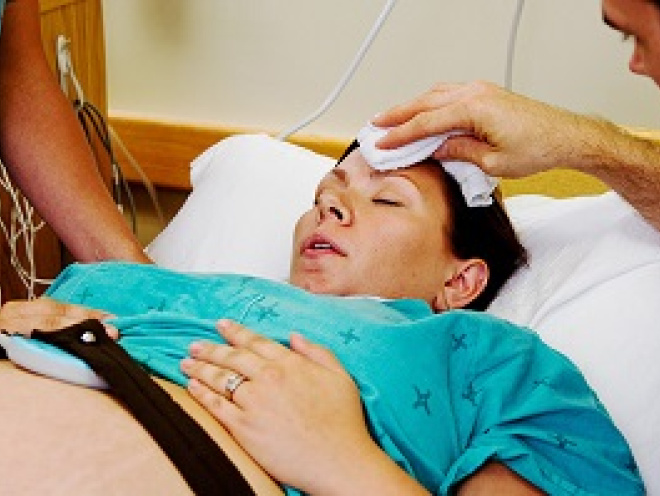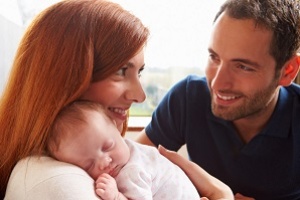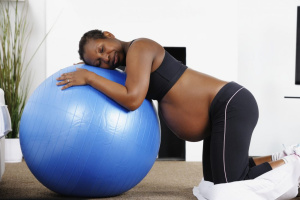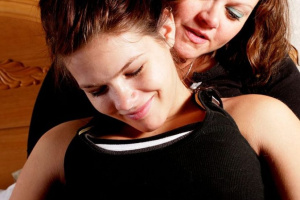You might like the idea of birth centres (midwife-led units), but wonder what would happen if your birth became more complicated. We explain below.
Midwife-led units and birth centres: the facts
- The pluses of birth centres (midwife-led units) are that they’ll give you a relaxed atmosphere that feels a bit more like home. A lot of women love this atmosphere during the birth process.
- If you’re a first-time mum though, being transferred from the birth centre to an obstetric unit during labour is pretty common – around four in 10 women are transferred (Hollowell et al, 2011).
- Around one in 10 women having their second or subsequent baby are transferred to an obstetric unit (Hollowell et al, 2011).
- Transfers usually happen because of a changing situation. (Hollowell et al, 2011; NHS Choices, 2018a)
Some of the changes that could result in a transfer include the following:
- Slow or delayed progress in labour
- You want stronger pain relief like an epidural, which is only available in hospitals.
- You or your baby need extra observation, care or treatment during labour. (Birthplace in England Collaborative Group, 2011; NICE, 2014)
After the birth, you and your baby might still be transferred if:
- Your baby needs special care.
- You need extra care because you experience:
- heavy bleeding (postpartum haemorrhage)
- a retained placenta, where all or part of the placenta has stayed inside you
- a tear that your midwife is unable to repair (Hollowell et al, 2015).
When you’re more likely to be transferred
Some things make a transfer more likely. They are:
- giving birth after 41 weeks of pregnancy
- being aged over 35
- having complicating conditions like meconium in the amniotic fluid. (Hollowell et al, 2015)
Should I worry if I am transferred?
Midwives at birth centres and midwife-led units are trained to respond to emergency situations (NICE, 2014). Emergencies are unusual – most transfers happen because of issues with how a labour is progressing and are just a precaution (NICE, 2014).
If you feel upset about how your transfer was handled, you should be given the chance to discuss this with your midwife after you’ve given birth (Rowe, 2011).
What happens if you’re transferred to hospital from a birth centre?
If you’re giving birth in a birth centre (midwife-led unit) that’s alongside a hospital, you can transfer easily, probably by wheelchair or wheeled bed. If you’re in a freestanding midwife-led unit, you’ll be taken to hospital by ambulance.
Your midwife will discuss the reasons for the transfer with you and your partner and explain what you can expect and how long it will take (NICE, 2014).
- Before transfer, you'll be dressed, wrapped in a blanket or otherwise covered in a way that you feel is comfortable and appropriate.
- You'll be made to feel as comfortable as possible before and during transfer.
- Any ambulance staff or other personnel involved are aware that some positions may make you uncomfortable or afraid and could affect your labour, so you should be encouraged to choose how to move and what position to adopt if possible.
- If you are transferred to an obstetric unit after the birth then your baby goes with you (NICE, 2014).
You can find out more about what happens when there are complications by asking questions on a tour of the unit, if that’s possible. You could also speak to your midwife.
Use the NHS Maternity unit search (NHS, 2020a) to find out contact information for your local birth centre.
You can also ask:
- Where you might be transferred to if necessary.
- Whether your midwife will stay with you.
- Whether your birth partner will be able to come with you in the ambulance or if they need to travel separately.
The midwife will explain to you and/or your birth partner clearly why a transfer is happening. (Rowe, 2011; NICE 2014)
What do I need if I am transferred to an obstetric unit?
It’s a good idea to have a hospital bag with you in the birth centre (midwife-led unit), with the usual stuff you’ll need. Your birth partner might also like to have a bag ready for themselves with:
- drinks and snacks
- cash for parking, for example
- a change of clothes
- some toiletries. (NHS Choices, 2018b)
- a face mask (NHS, 2020b)
This page was last reviewed in April 2021.
Further information
Our support line offers practical and emotional support with feeding your baby and general enquiries for parents, members and volunteers: 0300 330 0700.
We also offer antenatal courses which are a great way to find out more about birth, labour and life with a new baby.
Make friends with other parents-to-be and new parents in your local area for support and friendship by seeing what NCT activities are happening nearby.
Birthplace in England Collaborative Group (2011) ‘Perinatal and maternal outcomes by planned place of birth for healthy women with low risk pregnancies: the Birthplace in England national prospective cohort study’, BMJ, 343(nov23 4), pp. d7400–d7400. Available at: https://doi.org/10.1136/bmj.d7400
Hollowell J, Puddicombe D, Rowe R, Linsell L, Hardy P, Stewart M, Newburn M, McCourt C, Sandall J, Macfarlane AJ, Silverton L, Brocklehurst P. (2011) The Birthplace national prospective cohort study: perinatal and maternal outcomes by planned place of birth in England research programme: final report. NIHR Service Delivery and Organisation programme. Available from: https://www.npeu.ox.ac.uk/birthplace [last accessed 2nd April 2021]
Hollowell J, Rowe R, Townend J, Knight M, Li Y, Linsell L, Redshaw M, Brocklehurst P, Macfarlane A, Marlow N, McCourt C, Newburn M, Sandall J, Silverton L. (2015) The Birthplace in England national prospective cohort study: further analyses to enhance policy and service delivery decision-making for planned place of birth Health Services and Delivery Research. 3(36). Available from: https://www.journalslibrary.nihr.ac.uk/hsdr/hsdr03360#/abstract [last accessed 2nd April 2021]
Homer C, Cheah S, Rossiter C, Dahlen H, Ellwood D, Foureur M, Forster D, McLachan H, Oats J, Sibbritt D, Thornton C, Scarf V. (2019) Maternal and perinatal outcomes by planned place of birth in Australia 2000 – 2012: a linked population data study. BMJ. Available from: https://bmjopen.bmj.com/content/bmjopen/9/10/e029192.full.pdf [Accessed 29th March 2021].
NHS Choices. (2018a) Where to give birth: the options? Available from: https://www.nhs.uk/conditions/pregnancy-and-baby/where-can-i-give-birth/ [last accessed 2nd April 2021]
NHS Choices. (2018b) Pack your bag for labour. Available from: https://www.nhs.uk/conditions/pregnancy-and-baby/pack-your-bag-for-birth/ [last accessed 2nd April 2021]
NHS. (2020a) Find Maternity services services. Available from: https://www.nhs.uk/Service-Search/other-services/Maternity%20services/LocationSearch/1802 [Accessed 1st April 2021].
NHS. (2020b) Supporting pregnant women using maternity services during the coronavirus pandemic: Actions for NHS providers. Available from: https://www.england.nhs.uk/coronavirus/wp-content/uploads/sites/52/2020/12/C0961-Supporting-pregnant-women-using-maternity-services-during-the-coronavirus-pandemic-actions-for-NHS-provi.pdf [Accessed 1st April 2021].
NICE. (2014) Intrapartum care for healthy women and babies (NICE Guideline 190). Available from: https://www.nice.org.uk/guidance/cg190 [last accessed 2nd April 2021]
Rowe, R. (2011) Transfer from midwifery unit to obstetric unit during labour: rates, process and women's experience [DPhil thesis]. Oxford: University of Oxford. Available from: http://ora.ox.ac.uk/objects/uuid:bc7776ef-1e6e-46d0-9fa7-c62e653920b3 [last accessed 2nd April 2021]
Scarf V, Rossiter C, Vedam S, Dahlen H, Ellwood D, Forster D, Foureur M, McLachan H, Oats F, Sibbritt D, Thornton C, Homer C. (2018) Maternal and perinatal outcomes by planned place of birth among women with low-risk pregnancies in high-income countries: A systematic review and meta-analysis. Midwifery. Available from https://www.sciencedirect.com/science/article/pii/S0266613818300974. [Accessed 29th March 2021].








